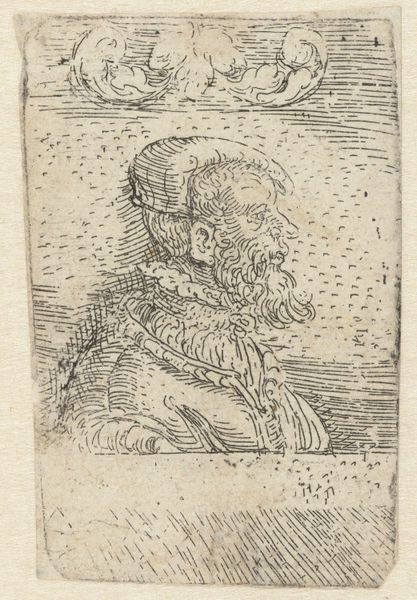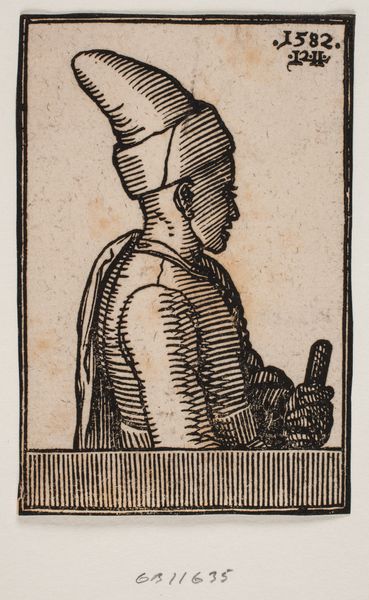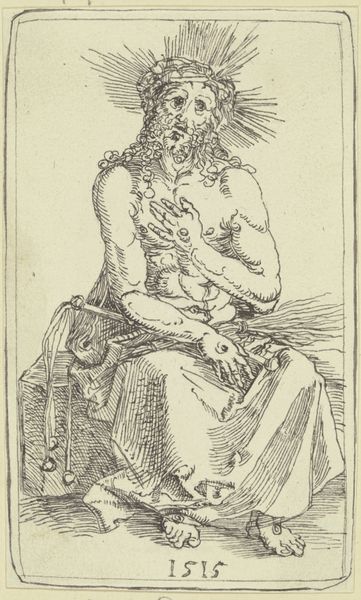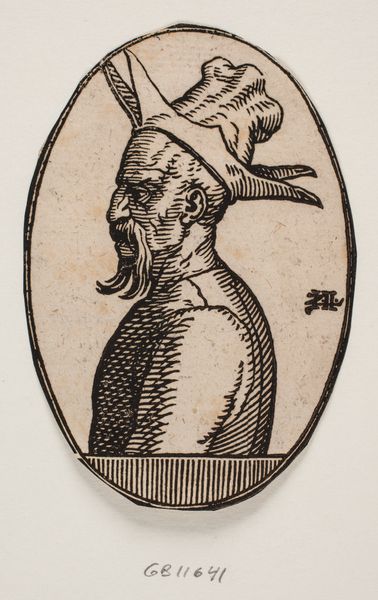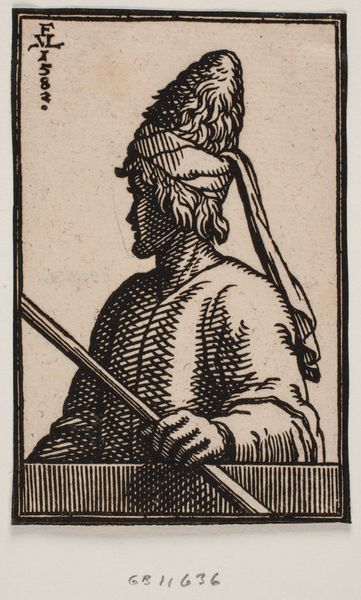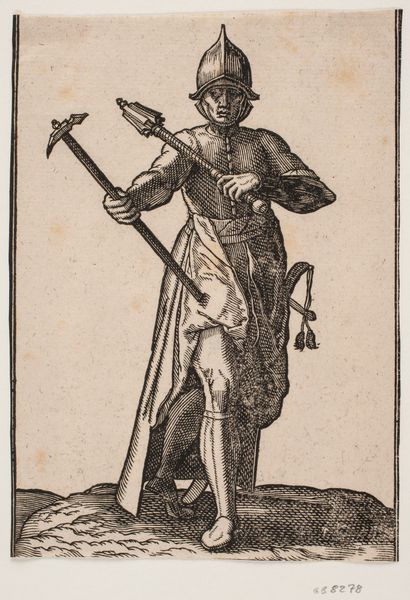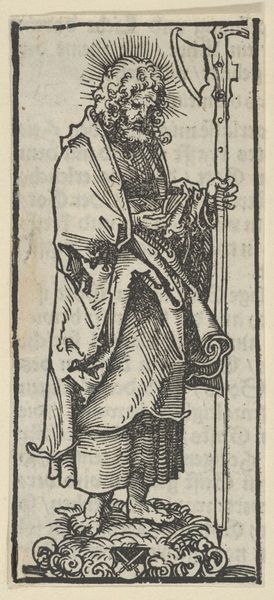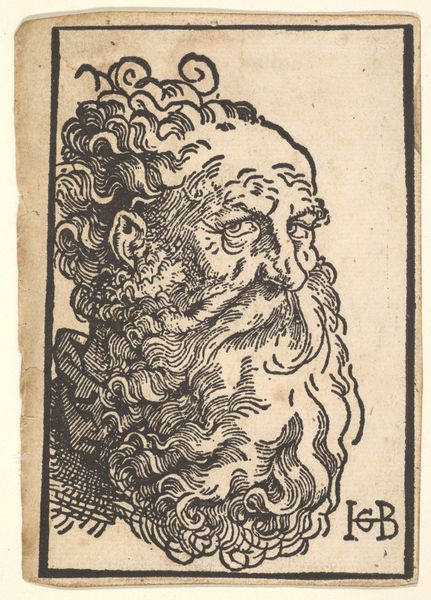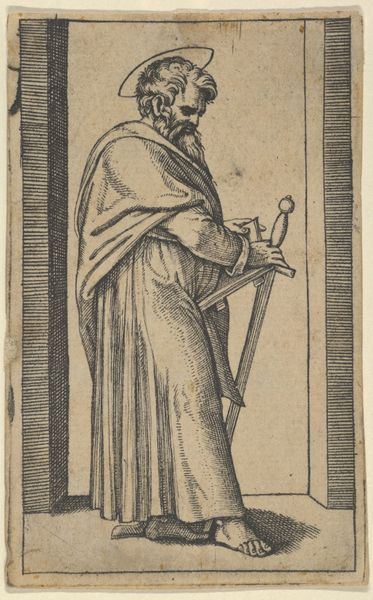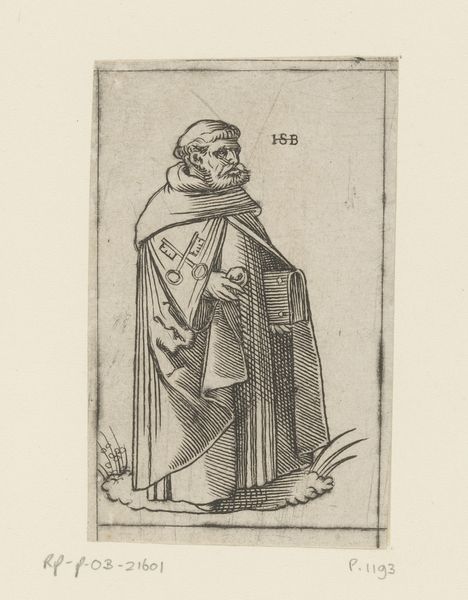
Bust of a man with a hanging moustache, a ponytail hangin down from the crown of his head and hat hanging suspended from a cord wound around his neck, the left side of the man's face is seen in profile 1582
0:00
0:00
print, woodcut
#
portrait
# print
#
figuration
#
11_renaissance
#
woodcut
#
line
#
northern-renaissance
Dimensions: 91 mm (height) x 68 mm (width) (bladmaal)
Curator: Look at the texture Melchior Lorck achieves in this woodcut, dating back to 1582. It's currently held at the SMK, Statens Museum for Kunst. What's your initial read? Editor: Stark! The stark contrast of the black lines creates an almost confrontational image, there's a definite intensity about this man. Curator: Precisely! Think of Lorck’s era; printmaking served to disseminate images and ideas rapidly, impacting societal dialogues across different social strata. This “Bust of a man with a hanging moustache..." disrupts typical portraiture. What do you make of the ponytail, the hat hanging from his neck? Editor: It challenges hierarchies. The dishevelment undermines nobility, yet the penetrating gaze still commands a certain presence. There is an inherent defiance against conventional portraiture that makes it interesting from the perspective of marginal identities. This depiction subverts idealized masculine norms. Curator: Good point. It's worth exploring how Lorck navigates imperial representation and identity formation, offering glimpses into complex power relations of the period. The hanging hat is intriguing. Is it a symbol of rejection, perhaps, of societal norms, or is it just happenstance? Editor: Exactly! Think of the agency being asserted by the sitter in terms of identity politics. And, of course, this wasn't just Lorck's vision in isolation. Consider who this man *was* in his context. Was this subversive self-fashioning, or performance in the presence of a European audience? Curator: All extremely valid. Analyzing it with the backdrop of artistic patronage also highlights its significance. These portraits, though seemingly individual, played roles within broader cultural and political contexts. Editor: I see a nuanced negotiation of power being depicted. Analyzing it further will hopefully unveil greater meaning of its function and creation within a given time frame. Curator: I concur! The complexities surrounding Lorck’s artwork continues to offer rich layers of interpretation through different socio-cultural frameworks. Editor: This woodcut speaks volumes beyond mere physical depiction and I want to further contextualize it within the narrative of subversion and empowerment that continues even in current modern dialogue.
Comments
No comments
Be the first to comment and join the conversation on the ultimate creative platform.

